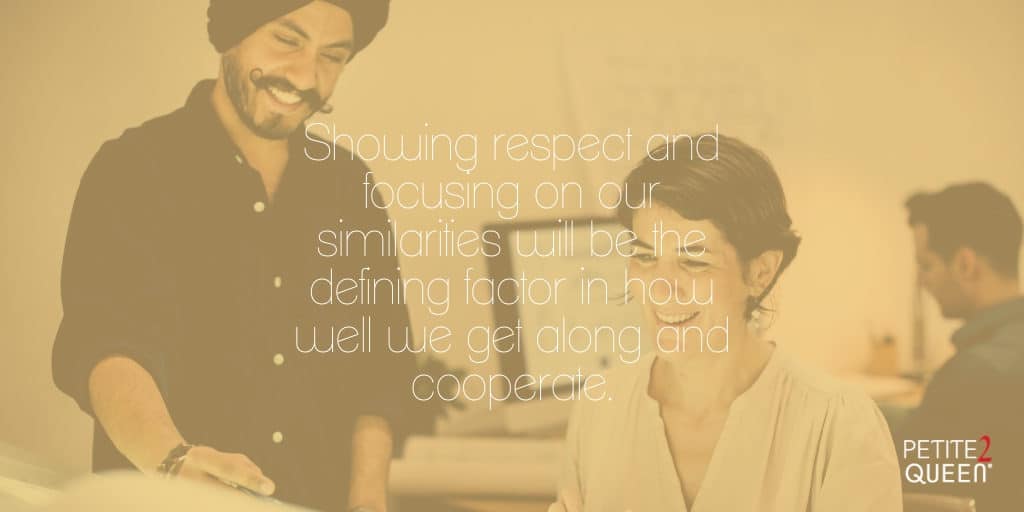One of the great things about the world today is how diverse and blended it has become. With the quickness and ease of traveling, the ability to connect with people online, and the ever-growing attitudes of acceptance, people regularly interact with those from another country or cultural background. Naturally, this trend has made its way into the workplace, too.
With so many cultures represented among your co-workers and other organizations with which you work, it’s important to understand the subtle differences that exist in communication styles and attitudes. Consider the different cultures you regularly work with: How much do you know about them? In what ways might you communicate or work differently? Most importantly, are you ready to learn more in order to enhance the working relationship?
Cultural Differences You May Encounter
Many of the norms we take for granted are particular to our culture, so it can be surprising to discover how other cultures do things so differently!
One of the first things you may notice is the diversity in greeting styles. In the United States, we tend to greet people with a firm handshake, especially in business settings. In other cultures, a kiss (or two or three) on the cheek is often part of a standard greeting. While this is often only between two women or people of opposite genders, in some places the cheek kisses occur between men, too. In still other cultures, a nod or slight bow may be the norm. Furthermore, some cultures require that you address the oldest person in the room first.
Greetings are often indicative of whether a country or region is part of a “low-context” or “high-context” culture. Generally speaking, “low-context” cultures (including the US, Germany, Australia, and more) will stand farther apart and keep touching to a minimum. “High-context” cultures (such as Spain, Brazil, China, and most parts of Africa) usually stand closer together and may be less concerned with personal space.
Talk the Talk
Verbal communication is another area with great diversity. As a “low-context” culture, in the United States, we tend to be very direct and say what we mean. However, many cultures are much less direct. For some, saying “yes” doesn’t necessarily mean they agree… it might just mean they understand what you’re saying. They may even imply they’ll have a project done much sooner than they can feasibly accomplish. Though it may be confusing and frustrating for us, for them, it can be a matter of “saving face” or trying to please you.
Communication differences may extend to types and amounts of humor we use. Some cultures use a lot of humor throughout the day, even veering outside of what many Americans would consider appropriate for a business setting. If you’re not used to that much joking, it can be difficult to know when to take them seriously. On the other hand, some cultures use virtually no humor in the workplace. Between those extremes are cultures (such as the United States) that strike a balance between the two. While some humor is appreciated, we generally keep it short and sweet while at work.
During meetings, there are varying amounts of time spent on non-work-related chit chat. In the US, we tend to keep that to a minimum, and after a minute or two will swiftly move on to the business at hand. In other countries, they might spend a solid half hour discussing personal matters before getting down to business. Still other countries don’t waste any time on personal pleasantries.
Watching the Clock
Timeliness is another major theme to consider. In the United States, we tend to be very punctual. If we set a meeting for 10:00, it will start at 10:00. For other cultures, that 10:00 time holder may be seen as more of a suggestion than a specific commitment. Thus, in many countries, things tend to start later than you might expect. Deadlines may also be regarded with similar leniency.
Likewise, while we may keep our meals quick and conversations on topic, other cultures take their time. In Hispanic cultures, lunch tends to last at least one hour. There’s much time for talking, sharing of food, and relaxing before getting back to work.
On a related note, different cultures hold unique attitudes about work life balance. Americans tend to be quite career-focused, and this is reflected in our working hours, how we take breaks, and how much vacation we take each year. Countries like Japan and South Korea may expect their employees to work 16-hour days; if you do business in these countries, you should be prepared to stay out drinking and singing karaoke with your associates well into the night. Other cultures, however, place more value on leisure time away from work, which may result in longer lunch breaks or more vacation days. It can also be evident in the attitudes people may express towards how much you work or what career you pursue.
These are just some of the most obvious types of cultural differences you may run into. However, each culture is unique, and if you know who you’ll be working with, it is imperative that you acquaint yourself with their unique attributes.
Prepare to Learn About Other Cultures
If you’re traveling to another country, you have a great opportunity to learn about the culture beforehand. And keep in mind: there are often significant regional variations. Read up on how people in that particular area of the country tend to communicate and work. Prepare to adopt these norms during your visit. Remember: When in Rome, do as the Romans do!
On the other hand, you may be hosting business people from another country at your local workplace. Although you’re on home turf, it’s still a gracious gesture to make your guests feel welcome. Brush up on your understanding of their culture, and be prepared to engage them in a way that is comfortable for them. While they may well try to blend in with the “American” way of doing things, it will show that you are culturally aware and aiming to foster a strong relationship.
The same rules apply when working with people from another country remotely. When calling or video conferencing with professionals from another culture, be understanding of their communication style and attitudes towards punctuality. Likewise, if you have co-workers who are part of another culture, be accepting and aware of the differences in working style.
It’s a Process
Don’t be afraid to learn new things. Try to learn as much as you can by reading or watching videos about the diverse cultures. Don’t go overboard in showing your newfound cultural awareness. Often, the differences are not as pronounced or rigid as you might think. Furthermore, with the major globalization that has happened over the last few decades, people are often very aware of your culture, too, and may be prepared to fit in with your working style.
Don’t worry if you make a mistake or misunderstand someone. Ask them to clarify or teach you, and offer to show them your way of doing things, too. Likewise, avoid taking offense if someone of another culture does or says something unusual. It may simply be a cultural difference. It will be a process to fully understand each other. The key is to show respect and focus on our similarities more than our differences. This will be the defining factor in how well we get along and cooperate.
Work Together
With a little knowledge and a lot of practice, we can all work together effectively and harmoniously. There are plenty of ways cultures may work or communicate differently, but in the end, we’re all people. We have more similarities than differences, and we shouldn’t become stressed about the distinctions. As long as we don’t set out to offend, everyone can get along. Celebrate the diversity in our world, our organizations, and our colleagues.
Additional Resources
- http://www.ctbusinesstravel.co.uk/news/blog/business-etiquette-around-the-world/
- https://www.universalclass.com/articles/business/handling-cultural-differences-in-the-workplace.htm
- http://www.diversityresources.com/cultural-diversity-workplace/

Amanda Whitbeck is Vice President of Operations at Petite2Queen. Since earning her master’s degree in Global Entertainment & Music Business from Berklee College of Music, Amanda has played key roles facilitating growth at start-ups. She’s also worked in diverse sectors of the music industry, from live events promotion to entertainment journalism. She brings her expertise in music business, writing, and website development to Petite2Queen.



